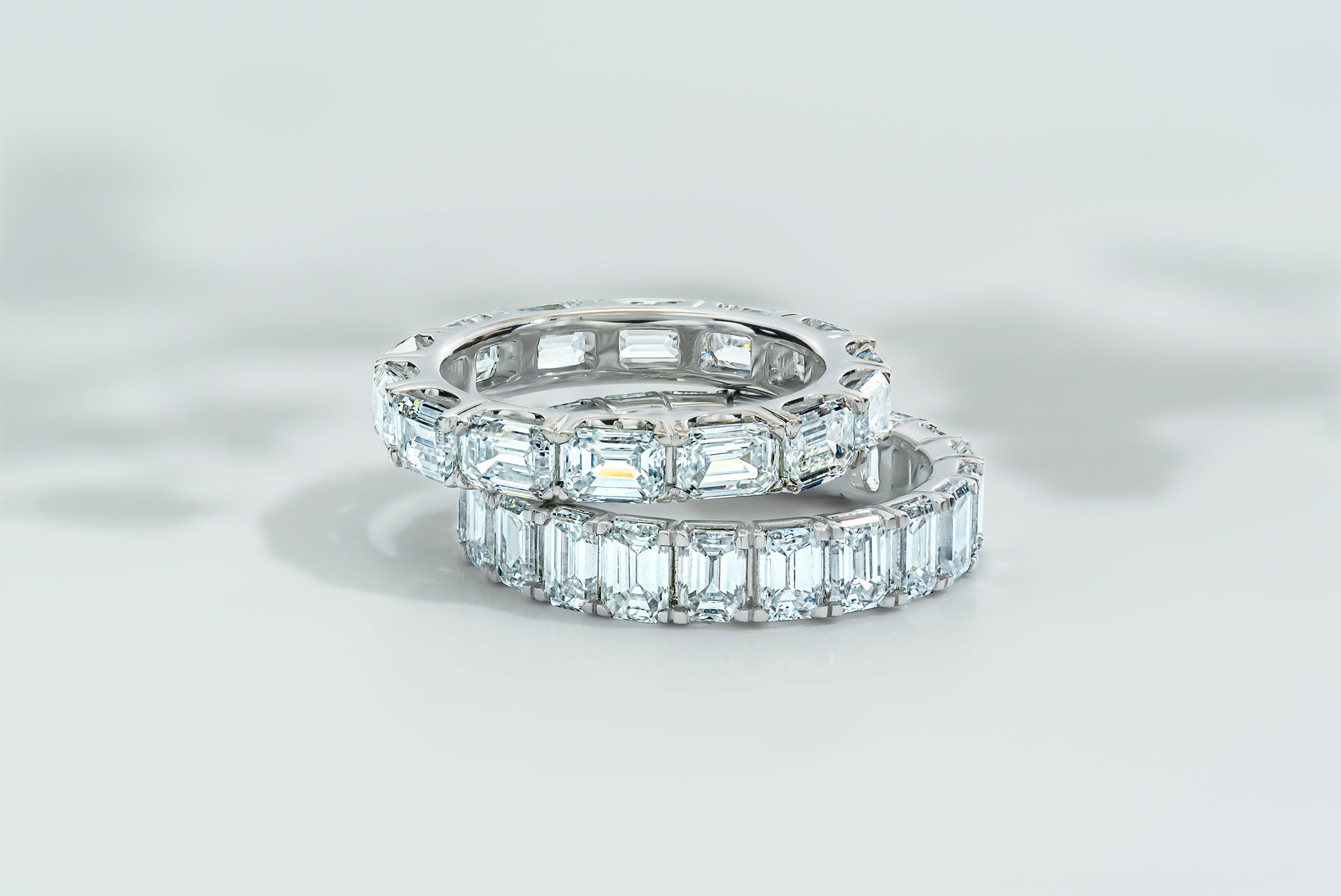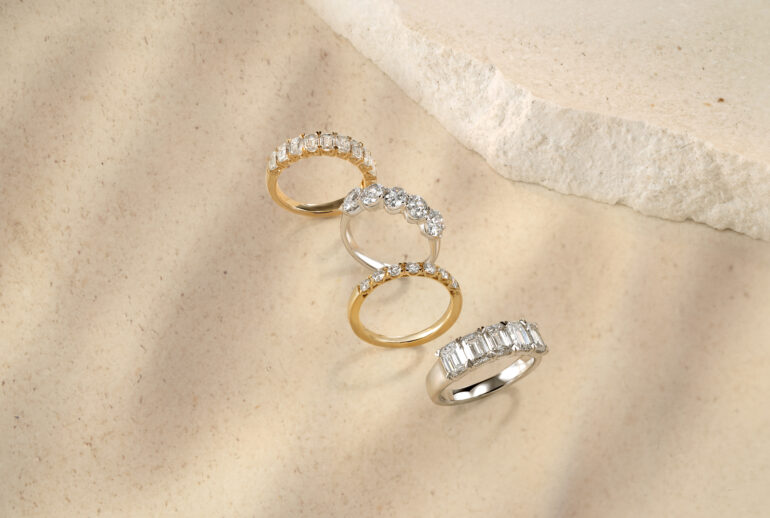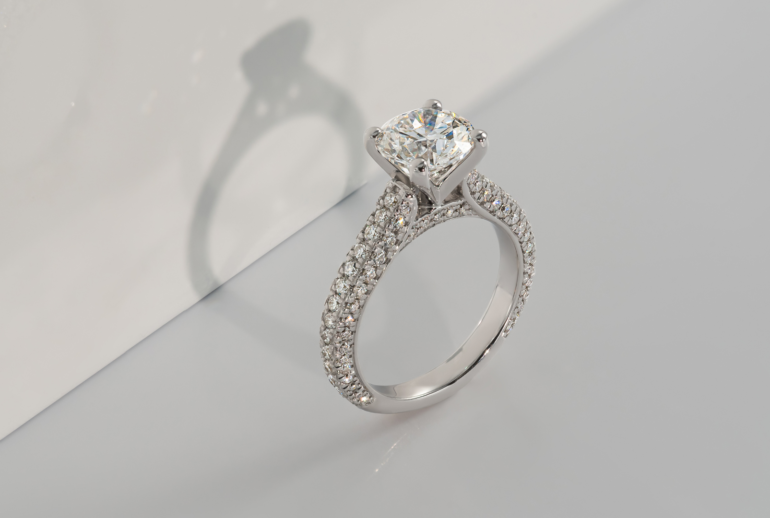When selecting the ideal metal for jewelry, two popular choices that often stand out are platinum and white gold. Both white metals possess a captivating luster and are favored for their elegance and durability. However, there are differences between platinum and white gold in terms of composition, appearance, and price, which can affect which one you choose.
What is Platinum?
Platinum is a precious metal that belongs to the platinum group elements (PGE). It is a naturally occurring element known for its density, strength, and resistance to corrosion, making it highly desirable for jewelry.
The metal is typically obtained from platinum ore deposits, where it occurs in association with other elements such as palladium, rhodium, ruthenium, iridium, and osmium. The ore is extracted from mines and then refined to separate the platinum from the other metals.
The purity of platinum is typically measured in parts per thousand, known as fineness. Jewelry-grade platinum is usually 95% pure (950 parts per thousand) and is marked as Pt950. The remaining 5% consists of other metals, such as copper or cobalt, added to improve the metal’s workability and durability.
Platinum possesses several unique characteristics, such as its durability, strength, and color and shine that make it highly sought after for jewelry. It has a brilliant white color, which complements lab grown diamonds and other gemstones beautifully.
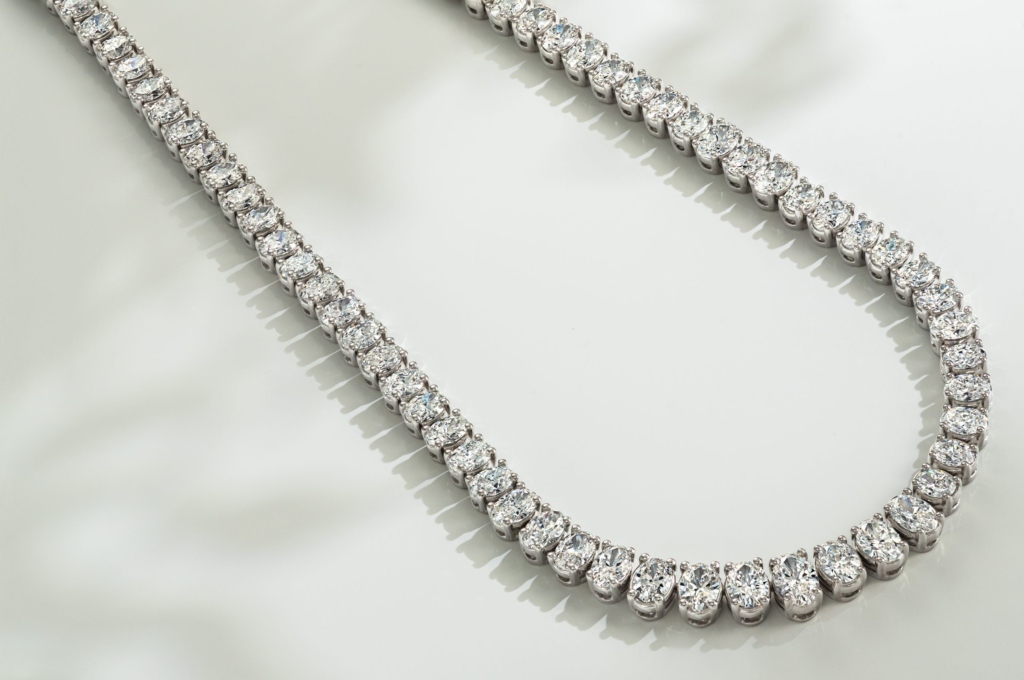
What is White Gold?
White gold is a popular alternative to platinum and yellow gold for jewelry. It is an alloy that combines pure gold with white metals such as silver, palladium, nickel, or zinc. The resulting mixture achieves a white or silver color.
Pure yellow gold is mixed with white metals in precise proportions. Adding these white metals creates an alloy that alters the color of the gold, making it appear white. The exact composition of white gold can vary, but it is commonly around 75% pure gold (750 parts per thousand). The remaining percentage consists of the added white metals.
To enhance the appearance and durability of white gold, it is often coated with a thin layer of rhodium, a member of the platinum group of metals. Rhodium plating provides a bright, reflective finish, protects against scratches, and helps maintain the white color. Over time, this rhodium plating may wear off, requiring re-plating to restore its original appearance.
White gold has a similar look to platinum but is generally more affordable. The versatility of white gold allows for various designs and settings, making it a popular choice for engagement rings, wedding bands, and other jewelry.
Platinum vs. White Gold for Diamond Rings
Choosing between platinum and white gold for your lab-created diamond rings is like picking your favorite flavor of ice cream – it all comes down to your taste buds, or in this case, your personal style and way of life.
- The Platinum Powerhouse
Think of platinum as the big shot in the ring world. It’s known for its remarkable toughness and enduring appeal, making it a fantastic choice for diamond rings. The sturdiness of platinum is like a protective hug around your precious diamonds – ensuring they’re safe and sound.
The natural glow of platinum does a fantastic job of showing off white diamonds. No wonder it’s the go-to metal for engagement rings. As time goes by, platinum dons a natural patina, a kind of vintage charm that a lot of folks find appealing. If you’re more of a “shine-on” person, you can easily buff it back to its original sparkle.
If you’ve got sensitive skin or have a feud with certain metals, platinum can be your skin-friendly ally, as it doesn’t cause those annoying skin irritations.
- The White Gold Wonder
White gold rings have the “it factor.” They’re known for their sleek, contemporary look that pairs brilliantly with the sparkle of a diamond. White gold is the chameleon of metals – it pairs beautifully with various diamond shapes and colors, providing a neutral stage that cranks up the diamond’s brilliance.
Which Metal Should You Choose?
If you’re the adventurous type or use your hands a lot, a platinum wedding band could be your perfect match. It’s tough as nails, and its natural whiteness won’t play the disappearing act over time, which means fewer trips to the jeweler. But all these perks come with a higher price tag, thanks to platinum’s rarity and density. If you’re a fan of the metal’s storied past and distinctive characteristics, and don’t mind paying a little extra, a platinum metal might be right for you.
But if you’re after a trendy, modern look without breaking the bank, you should give white gold a chance. Especially if you’re working with a tighter budget or prefer a lighter ring, a white gold wedding band is a winner.
In the end, it’s about what tickles your fancy. Both platinum and white gold are eye-catchers. Whether it’s the mighty allure of platinum or the chic affordability of white gold, you’re bound to find a ring, bracelet, necklace or pair of earrings that you’ll adore and treasure.
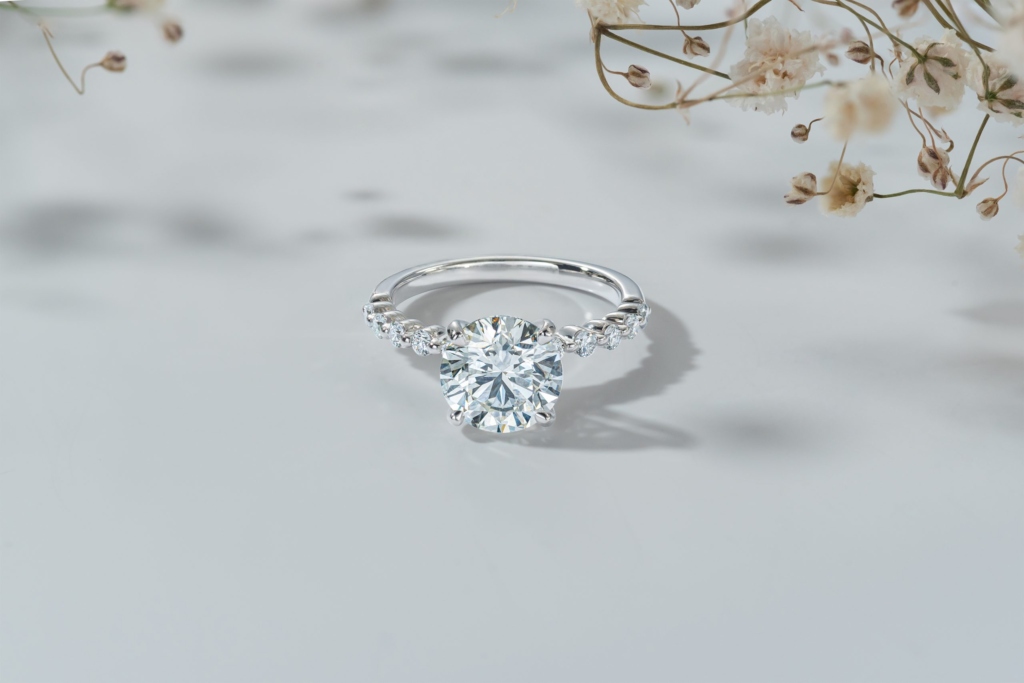
Find Your Perfect Diamond Ring at Grown Brilliance
Finding your perfect engagement ring or adding a sparkly new member to your jewelry family isn’t as difficult as you might think. At Grown Brilliance we’ve simplified the process, making it effortless and enjoyable..
Our dazzling collection brims with white gold and platinum pieces, all cradling sustainable, ethically sourced diamonds. From rings that’ll make you swoon to earrings, necklaces, and bracelets that’ll make your heart race, we’ve got you covered.
Take a leisurely scroll through our treasure trove of Grown Brilliance jewelry. Or, if you’re curious about our lab-grown diamonds, feel free to reach out to us. We’d love to chat!
